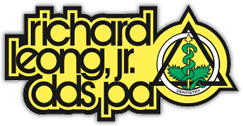Intense Lower Jaw Pain? It Could Be Temporomandibular Joint Disorder
If you suffer from intense pain in your lower jaw that doesn’t go away with prescription or OTC pain relievers, you might feel as though you have no other choice but to accept the pain and move on. The pain in your jaw may be due to temporomandibular joint disorder, or TMJ.
TMJ disorder has many possible causes, including arthritis, facial injury, and missing teeth. But one of the most common reasons many people develop temporomandibular joint disorder is bruxism, or teeth grinding. Fortunately, you can find treatment for TMJ and bruxism with the information, treatments, and home care management tips below.
How Does Bruxism Cause TMJ Problems?
Bruxism occurs when you grind your teeth and clench your jaws together. Although most people experience bruxism at night, some people can experience it during the day as well. However, most people don’t even know that they grind or clench their teeth until it affects their dental health.
Teeth grinding wears down your tooth enamel and crowns until both structures become thin, uneven, and weak. You eventually experience problems with biting and chewing solid food, such as chicken and carrots. If you grind your teeth very hard, they can shift inside their sockets and appear crooked, bucked, or pushed in when you smile.
Teeth clenching places a great deal of stress on your jawbones. Although your jawbones are designed to withstand eating different foods such as meat and hard vegetables, the tissues aren’t designed to stand up to excessive pressure. The pressure placed on your jaws causes tension and pain in your temporomandibular joints.
Temporomandibular joint pain can spread or radiate throughout your lower jaw, temples, and ears, especially when you lie down or place direct pressure on the joints. The pain can also affect the nerves and muscles in your neck and shoulders. Some people experience head and face pain when they have TMJ problems.
Your jaw pain won’t go away without help. In this case, you’ll need to seek professional dental care.
What Can You Do About Your Bruxism and TMJ Disorder?
One of the first and most important things a dentist will do is examine your mouth and jaws with X-rays. Although a visual exam can reveal details about the condition of your teeth, the test can’t reveal the state of your lower jaw and temporomandibular joints. If these structures are inflamed or damaged by bruxism, it’s critical that a dentist correct them now.
A dentist uses many different treatments to correct or stop the damaging effects of bruxism, including mouth or sleep guards. Sleep guards minimize the damage your teeth and jaws sustain from bruxism by creating a barrier between your upper and lower teeth.
Some dental providers use muscle relaxers to treat TMJ pain and bruxism. The muscles in your jaws can become tense from bruxism and TMJ, and this tension can travel to the tissues located close to your jaws, including your neck. Muscle relaxers release the tension in these tissues so that you can live without pain.
If your bruxism caused significant or extensive damage to your tooth enamel and crowns, a dentist can repair them with dental crowns, dental implants, and other treatments. The treatments not only help improve your bite, but they can also help restore your mouth back to good health.
After your treatment, you can help control your bruxism and TMJ pain with cardio and other exercises. Exercise releases stress in your body and helps relax your muscles. Your dentist may even prescribe exercise as a part of your treatment plan. If you have concerns about what types of exercises to do, consult with your provider.
To learn more about temporomandibular joint disorder and bruxism, contact the office of Richard Leong, Jr. DDS, PA for an appointment.




